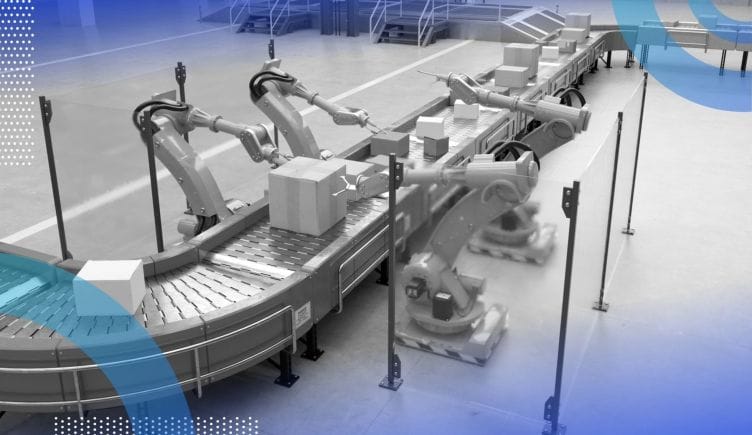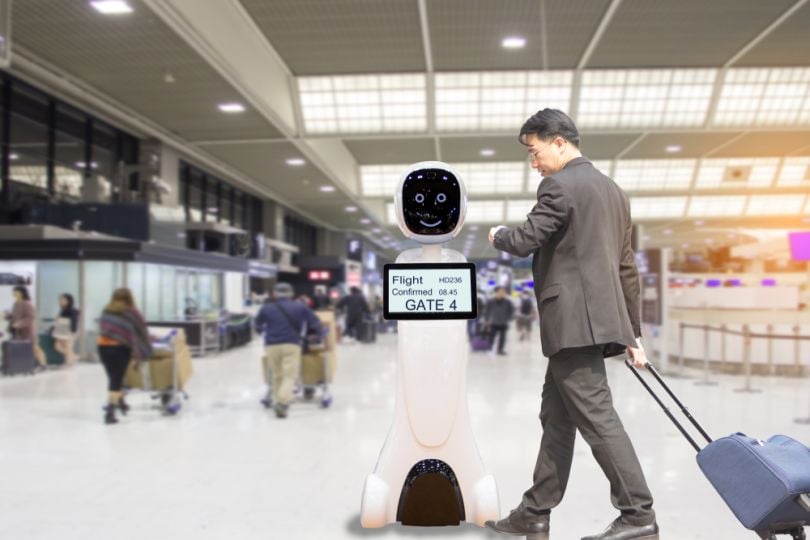
It’s time the small and medium-sized businesses of America embraced robotics, automation, machine learning, and artificial intelligence. What were once technologies utilized only by massive corporations and NASA are now available to Main Street America. But adoption has been slow, even through the pandemic. Part of the problem is that there remains a persistent fear among Americans when it comes to automation and robotics. Even if you set aside science fiction-inspired worries about Skynet and Terminators, there is a more tangible fear that robots will take jobs. What may come as a shock, however, is that businesses that introduce robotics not only create more jobs but also better jobs.
Read More About Robotics on BuiltIn.comThe Future of Robots and Robotics
Robots Don’t Take Jobs, They Improve Jobs
Take, for example, a warehouse that adds a palletizer robot, a machine that stacks products on a pallet to be shipped. Sure, that robot would replace a worker who has to do the manual labor of stacking boxes, but it also necessitates that the warehouse hire a programmer who can code and monitor the machine. It may also require hiring a technician to service the machine. Both would be higher-paying jobs that reduce the risk of injury to humans.
So, for the startups and small businesses that haven’t started automating, where should they begin? The key is identifying the menial, repetitive tasks that your workers are performing on a daily basis and identifying existing automation solutions. Chances are there are hundreds of common activities that are not unique to your business, and if that’s the case, then there is likely an off-the-shelf solution already available.
For instance, you may have part of your team that is solely dedicated to data entry. There are automation tools already on the market that can follow along as an employee performs the task, step by step, and learn to take over the process. These tools require little-to-no code and can be deployed after recording an employee do their daily work.
There are departments that are often seen as cost centers where automation can significantly increase their value. For instance, it has traditionally been difficult for marketing departments to show a direct contribution to revenue, but automation can help spell out that link and make adjustments. Google adwords is often seen as a necessity and Google has introduced their GCLID tracking code which follows a person from the point that they click on an ad until they convert as a customer. It will then report how much you earned from that sale back into your adwords account to help inform the google algorithm how to adjust your ads accordingly. You may already have access to GCLID, it may just be a matter of asking help from your rep.
Likewise, for manual labor, if you have repetitive tasks, such as stacking boxes like discussed above, there are companies that will take industrial robots and customize them for your needs. That is, you don’t need to build and program your own robot. What you will have to do is fund the cost of automation and hire technicians for maintenance. Luckily, there are even federal funding options available.
Read More About Robotics Innovation on BuiltIn.com34 Robotics Companies on the Forefront of Innovation
It’s Not as Costly as Companies Fear, Thanks to Tax Credits
Often, the fear of a huge upfront capital investment is what prevents startups and small businesses from taking the first step into automation. Fortunately, the federal government incentivizes these kinds of investments in an effort to help the country stay competitive with foreign powers rapidly adopting automation and robotics.
One of the ways this is already being done is through tax breaks like the R&D tax credit. The R&D tax credit rewards businesses that employ technical labor to solve problems, create new or custom solutions, or improve existing products or processes. Businesses can receive a portion of wages and material costs back for these activities. That can include introducing automation into a business.
The tax refunds a company can get back can often total more than an entire year’s worth of profits. For instance, a robotics design and engineering firm with $8.3 million in revenue was able to claim a credit worth $1,006,000 for prototyping and designing robots for sanding and painting aircraft modules.
The greatest barrier to the case for adoption of robotics and automation by businesses is an imaginary one: fear. Fear that the investment will not be worthwhile, fear that jobs will be removed, and fear that the resources for using this kind of technology effectively are out of reach. Once we move past this fear as a nation, not only will our businesses benefit, but we’ll continue our long tradition of innovation and tech leadership.
If the website content violates your rights, please contact us to delete it。








